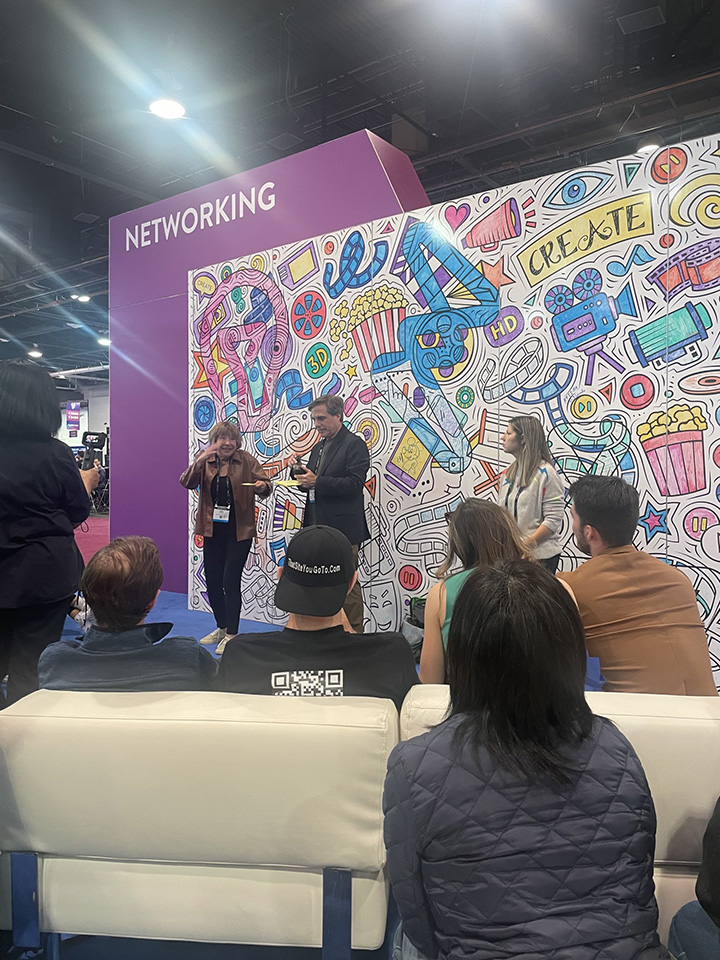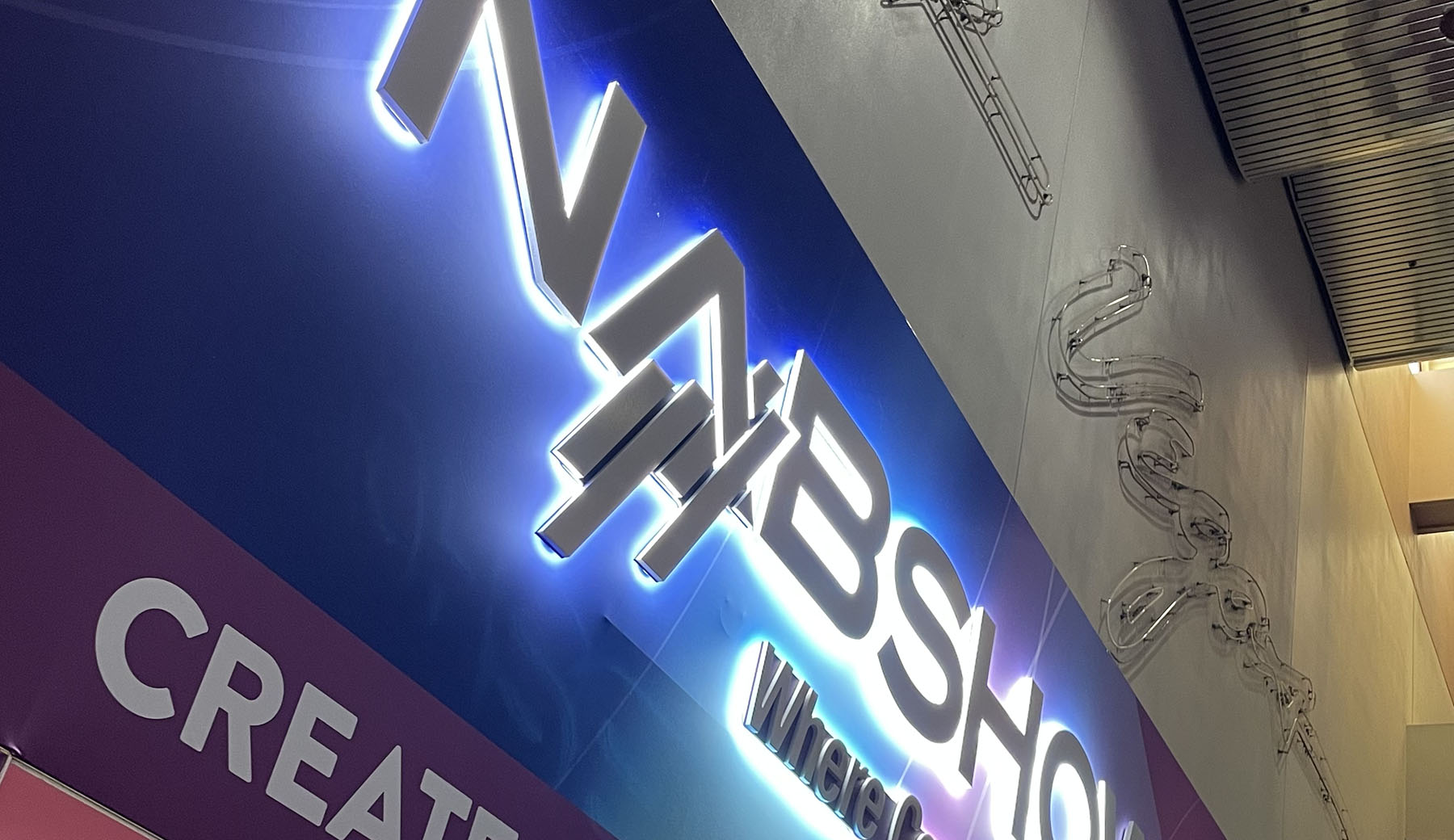Our crew had another fun and informative trip earlier this month to The National Association of Broadcasters Conference in Vegas. We took a little time to sit down with a couple of our attendees – Republic Partners Keith James and Chris Gipson and Republic Flame Artist Bryan Bayley – to learn about the latest technology on the floor and the conversations everyone was having about the future of our industry.
What were your main impressions of the convention this year?
CHRIS: Well first off no vaccination cards needed to be shown. More seriously though, Virtual Production was again a major theme this year, and as expected, there was much talk about AI. ChatGPT, Stable Diffusion, and Mid-Journey were talked about and discussed during some of the expert panels and breakout groups, but there was no new must see product or service that I could find that was pushing AI into a realm I wasn’t familiar with prior to the show. I was really hoping to see something from RunwayML (who is using AI in post-production applications), but they were not even represented at the show.
KEITH: Last year, because it was the first convention in three years, the show felt huge – everywhere you turned there were oversized LED walls and large dolly tracks for camera movements. This year the setups seemed more modest and more focused on illustrating the improvements in the technology. Exhibitors weren’t just trying to wow you with their technology, they were focused on making it more accessible and more user friendly. Yes, Mr.Moco was still showing off their insane Unreal Ride in the lobby, but the bigger crowds were around smaller setups like Stype who used a small pen to showcase their real-time camera tracking capabilities. Everything seemed a lot more plug-and-play this year – you just need an iPad or a laptop to get done what was showcased last year.
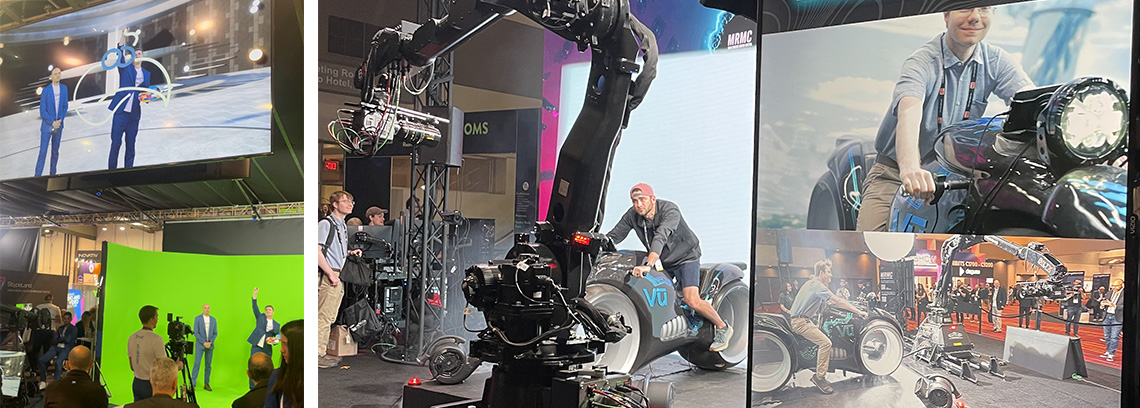
BAYLEY: Although in many ways the show seemed smaller than previous years, it was definitely bigger than last year. Attendance was over 65,000 which was 10,000 higher than last year. The ‘Connect’ and ‘Intelligent Content’ hall seemed to be the largest this year, with the most new and exciting trends there. ‘Create’ was divided between production and post-production, and those two halls had much of the same fare as the last few years. I didn’t find anything new and magical but many of the trends seem to be smaller, faster, cheaper gear to get work done.
Tell us a little bit about something that caught your eye.
BAYLEY: Zero Density had the most impressive ‘volume’ or virtual studio. Their demo showed off real-time compositing, CG integration, and lighting effects, all coming from one small desktop workstation. They demonstrated uses as small as close-ups for a children’s television show to large sets for hosting international sporting events. It was really impressive to see how far they were able to push their camera tracking data, turning their video wall into a portal to a virtual environment.
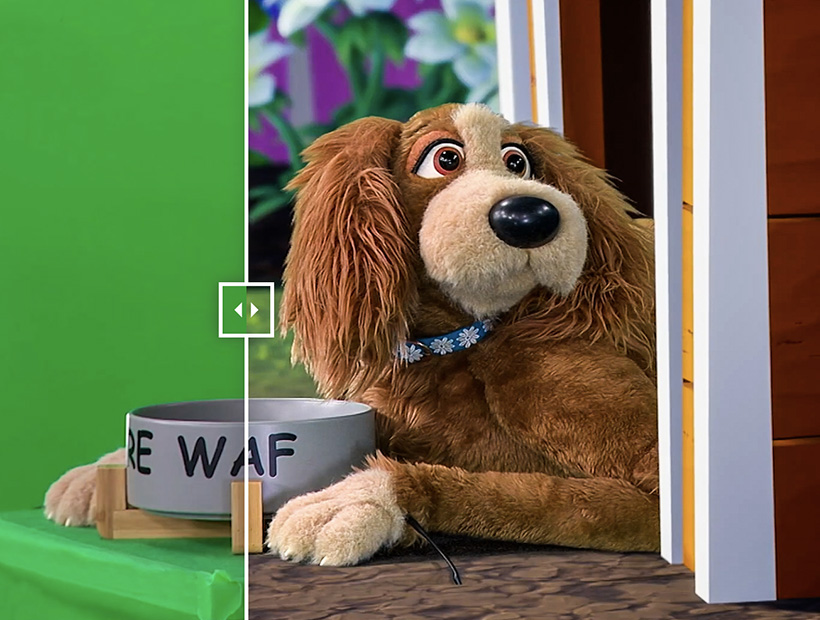
KEITH: Chris and I caught a pretty sweet private demonstration at Canon. They had a demo of their MREAL X1 3D glasses that allowed a 3D object to be projected in your natural environment. I’ve seen this kind of technology before, but what was cool about it is that it had cameras on the glasses that tracked your actions with your hands, allowing you to interact with the 3D image you were viewing, all while it appeared to exist in the real world in front of you.
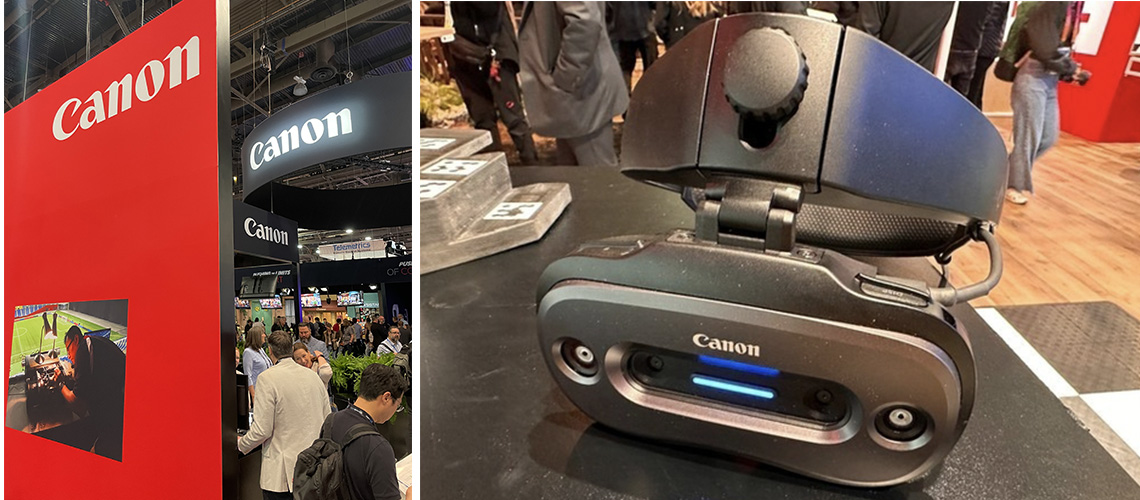
CHRIS: I too was impressed by these glasses. The demonstration that Keith and I saw seemed to be a bit more geared towards entertainment, and how new entertainment AR forms might continue to evolve. The use case that interests me a bit more though is how a CG artist, using this technology, might be able to interact with their own 3D static or dynamically rigged model in real time in 3D space and not just on a screen, and how this interaction might help inform the artist, acting as a sort of creative feedback loop, helping the artist to edit and refine the model. We saw a technology over at the Sony booth that I felt could have similar implementation. Their Spatial Reality Display delivers a 4K 3D image without glasses, and uses a high-speed vision sensor to track your eye movement and your position to generate a stereoscopic image for your left and right eyes.
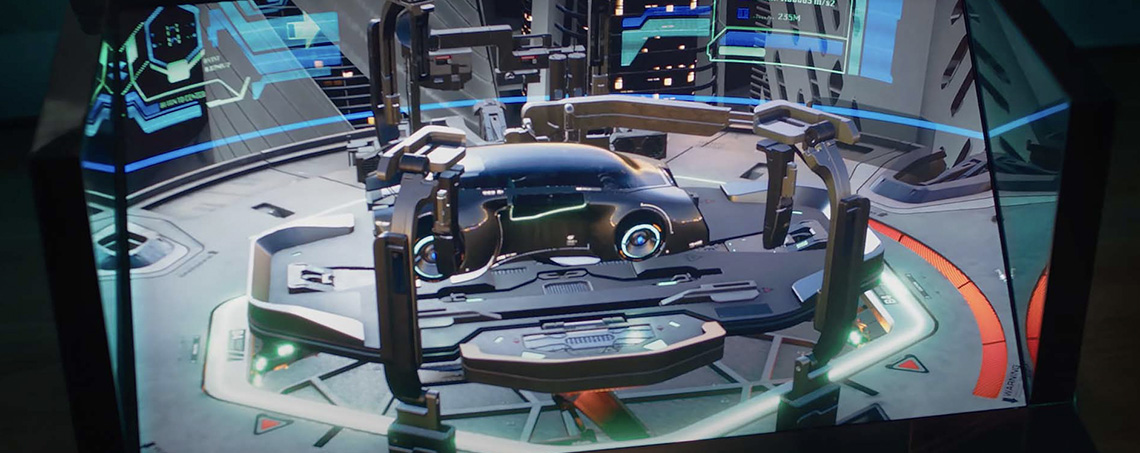
BAYLEY: Scattershooting around a couple other quick things that caught my eye. Dell had an impressive little 8K monitor for under $4000. Top Director showcased an NDI iPad App that allowed you to use your iPhone or iPad as a video switcher for live streams. And there was a big crowd looking at Insta360’s Flow which is an impressive AI tracking stabilizer for iPhone.
You can’t have a discussion about technology nowadays without including the recent leaps in A.I. and machine learning. What conversations were you hearing on that front?
CHRIS: There was one VFX panel that I went to, where one of the panelists talked about how AI will continue to democratize the creative process for the independent artist. One example is with the use of text to image products like Stable Diffusion and maybe more appropriately Mid-Journey. A solo creative with a good story idea or script can now start to flesh out the script and start experimenting with look development, even creating visually compelling storyboards. The look development and boards that can now be done with these text to image applications may also spark new ideas for the creative and may even encourage the creative to revise and improve upon the story idea and script.
BAYLEY: I thought AI / ML. would dominate the show this year but I did not see very many applications of it. Lots of people were talking about ChatGPT, Stable Diffusion, and other general AI tools but for industry specific applications I only saw a few audio-to-text products and copywriting tools to help flesh out scripts.
There are compositing tools starting to leverage ML. Copycat, Topaz, RunwayML are all products being used now. I just didn’t feel like the show floor had a lot of new or interesting applications just yet. This area of technology is about to move at warp speed.
Bayley, last year you hosted a Flame user at NAB that resulted in you going over to Korea to teach a few classes. Anything fun like that happen this year?
BAYLEY: The team at Logik (the Flame user group) decided to try something different this year. We organized two nights of “Logik After Dark.” This was a large suite at The Mirage where we hosted four sessions of discussion, demos, and socializing. I presented a few old-school tricks in Flame that involve using cameras and projectors to create shadows and using expressions to track graphics on moving targets. Other demonstrations included Python scripting to automate shot setups, Publishing workflow, and ColorSync Science. The Flame developers also gave us a general ‘roadmap’ they are working towards in the next few years.
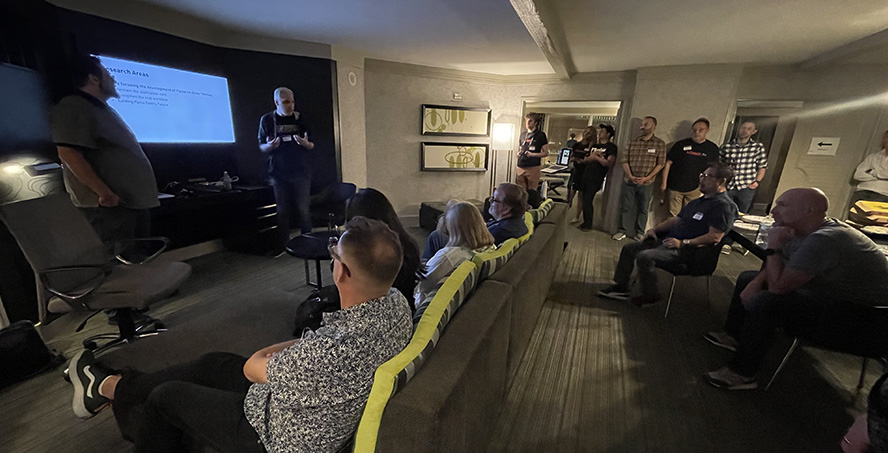
Everyone I’ve talked to thought Logik After Dark was a great success. We are a tight knit group and seeing everyone in person is always great. Because of the size of the user base, and the effort from everyone at Logik, it feels like we have a strong connection to the software developers and they are listening to us, implementing features and fixes that really help the Flame community get their work done. I’m proud to be a part of this community!
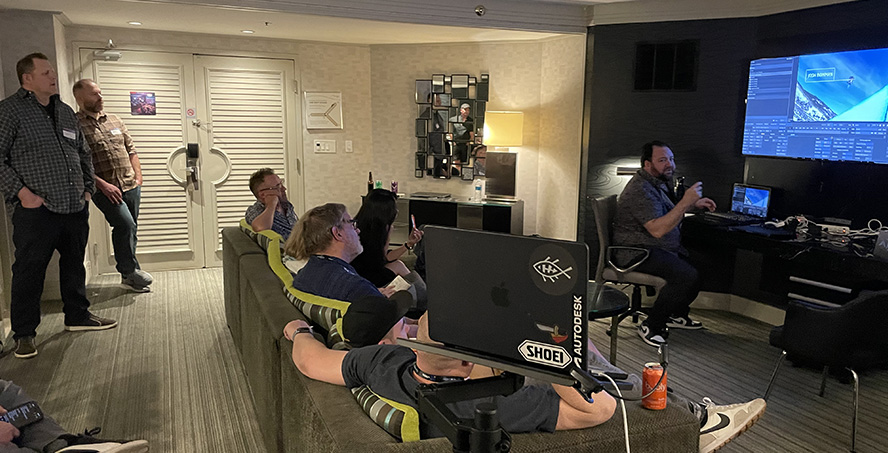
KEITH: I’m really glad I had the opportunity to attend one of these sessions. I’ve watched a good amount of the Logik events online, but it was really cool to be there in person and see what a close community they’ve built in recent years. They’ve brought together some of the smartest artists on the planet, and built a forum for all of them to work together to push the capabilities of their boxes as far as possible. Equally impressive to see was the support that Autodesk gives their group, evidenced by the presentation that two of their developers gave on recent and ongoing updates to the software. I’m an offline editor myself, and although a good amount of the details in Bayley’s presentation went over my head, I could clearly see the respect the artists in that group have for him and the quality of the work he was sharing.
Any final impressions you want to leave us with?
KEITH: I think I’m most excited about how all this crazy technology that’s been developed over the years continues to become more financially accessible to younger upcoming artists. While we were walking the floor, Chris and I got into a discussion about how years ago, the booths were just massive, and that was because the deals that were going down on the floor were huge, as established facilities were the only ones who could afford the gear. Today, the difference between the gear accessible to a student and the gear a professional is using are very negligible, and with public universities now teaching programs like Unreal Engine, it really starts to open up the doors to a much more diversified creative landscape than we had when Chris and I started in the industry.
BAYLEY: Like I said – The smaller, faster, cheaper mantra is at full force in our industry. Many aspects of the NAB show were about democratization. It means you have to be on your toes to keep up, but it also means people who previously wouldn’t have a chance to share their story are able to create, share, and find their audience.
CHRIS: Keith and Bayley already nailed it. The tools used to create visual stories are more powerful and cheaper than ever before. If you have a creative visual story to tell, there has never been a better time to create and tell that story.
